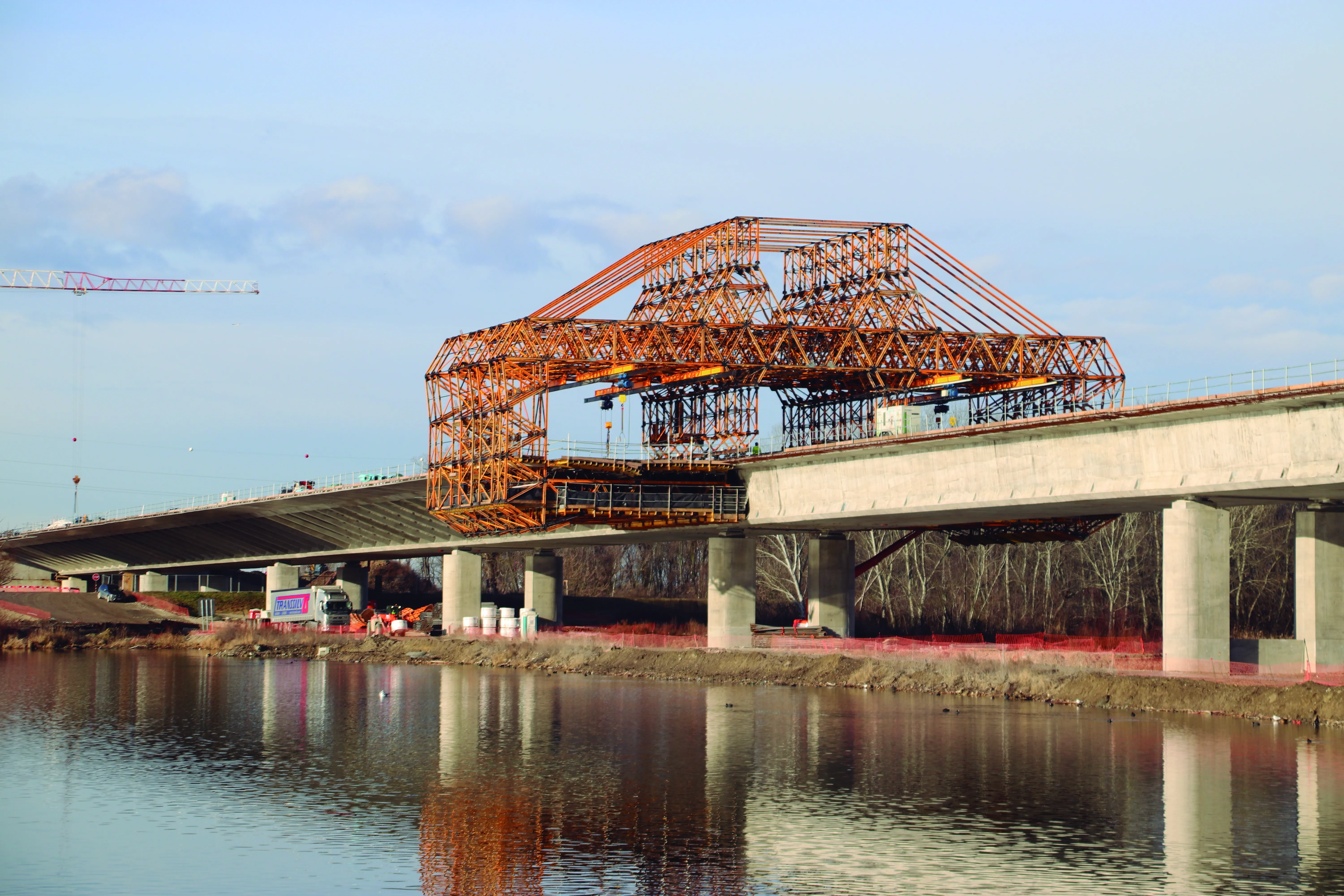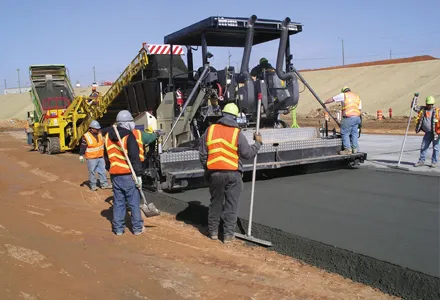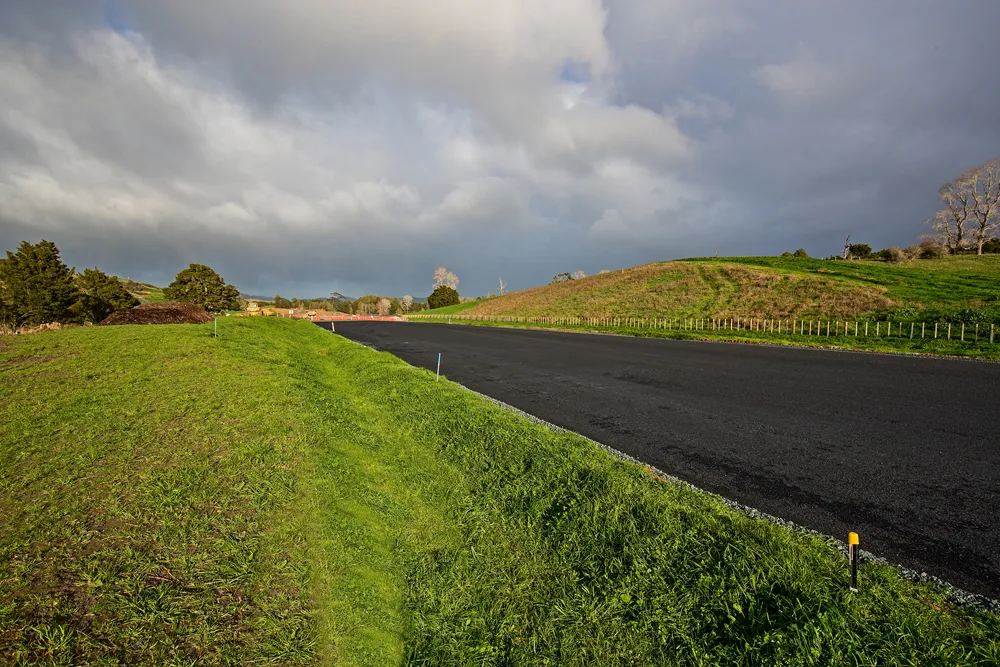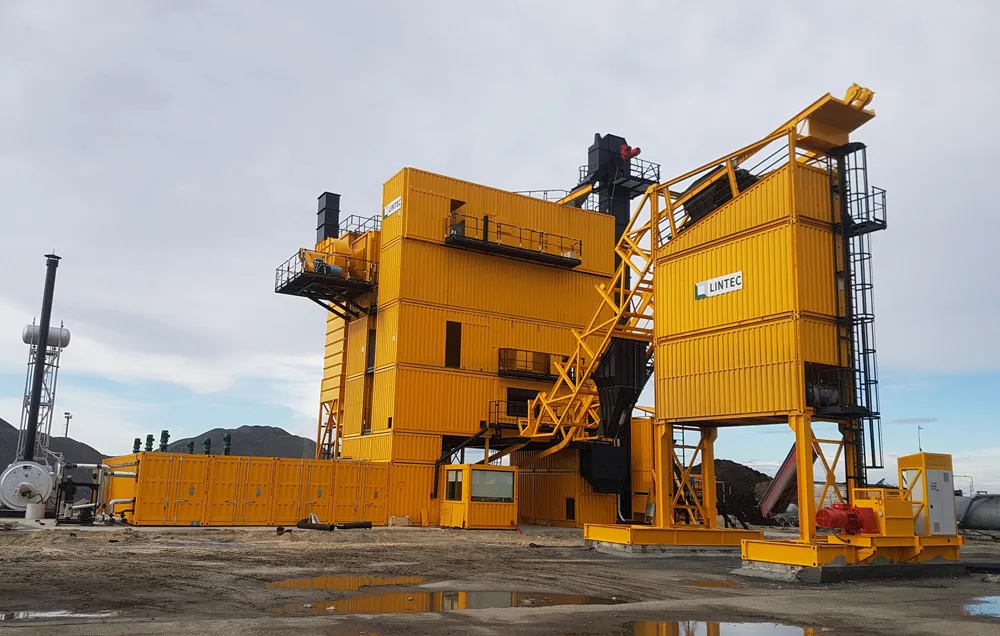
The 4km section of road where I40 meets I55 was last constructed with a Portland cement concrete pavement (PCCP) 23 years ago.
However, the growing traffic volume, currently at 60,000 vehicles/day and including a high percentage of heavy trucks, has taken its toll. Total reconstruction was deemed necessary.
With funds coming from the Interstate Rehabilitation Program, Koss Construction was awarded the 140-working-day contract from the Arkansas State Highway and Transportation Department in December 2013, with an anticipated completion date in the summer of 2015. The US$32.1 million contract includes full-depth road reconstruction, plus the rehabilitation of six bridges along the 4km section of the I-40/I-55 corridor.
As the prime contractor, Koss Construction is responsible for the placement of 152mm of recycled crushed concrete (recycled from the existing concrete slab), 152mm of cement treated crushed stone base course and the slipform paving of a 356mm slab of PCCP for the main lanes and 229mm of temporary concrete ramps.
Koss Construction is using Guntert & Zimmerman’s S850 and S600 pavers to complete the slipform paving of I-40/I-55’s six traffic lanes, three in each direction. When completed in 2015, the slipform paving portion of the 24-lane-km project will require placement of 32,723m3 of concrete, being supplied by local firm Razorback Ready Mix Concrete.
The contractor has to meet tough 0.25mm blanking band profilograph smoothness standards, with all sections reading less than 102mm per mile in order to receive an incentive bonus. Unfortunately, the high volume of reconstruction activities during the 140-working-day contract does not leave much room for the paving phase. This issue has been exacerbated by the weather.
Koss Construction took delivery of a new G&Z multipurpose S600 slipform paver bought for the I-40/I-55 project. The crew is using the S600 to pave a variety of widths, including the 4.6m and 4.3m mainline lanes and shoulders, as well as offset paving at widths of 1.2m and 3m.
The machine’s versatility, with its standard variable paving widths ranging from 2.4 to 6.7m without adding sections to the frame, is important, as the contractor has to change widths regularly on this project.
This S600 is equipped with G&Z’s patented TeleEnds: Telescopic Paving Kit End Sections. This new style of terminal end construction offers 0.92m of hydraulically telescoping capacity, giving contractors a total of 1.8m quick width change capability with two end sections. The TeleEnds are said to ensure the accuracy of the bottom of the paving kit terminal end, allowing Koss Construction to adhere to the tight smoothness specification for the I-40/I-55 project.
The paving crew uses the S600 for the 4.3m and 4.6m wide lanes, shoulders and temporary ramps. Because of the job’s segmented design, there are a number of smaller sections where the paver is called upon to fill in narrower pours.
In these instances, the crew places the sensors on the edge of the pan, sets the kit to 3m wide, cantilevers the kit off to the side of the paver and pours 1.2m and 2.4m offset sections adjacent to the previously poured lanes and shoulders.
The S600’s design allows the tractor to be configured as narrow as 3.65m in overall width, providing stability for offset paving.
While difficult, the most challenging part of the project, however, has to do with paving access. Since the I-40/I-55 corridor of West Memphis carries heavy traffic, the paving crew has to keep two lanes of traffic open in both directions during construction.
To optimise paver manoeuvrability at the site, Koss Construction equipped its S600 paver with G&Z’s available AccuSteer and SmartLeg systems. These allow the operator to manoeuvre the machine around track-line obstacles on the fly without having to stop for bolster swing-leg mechanical adjustment or steering transducer resetting.









